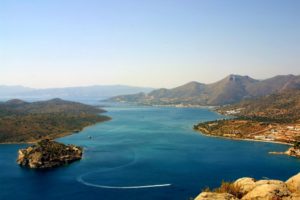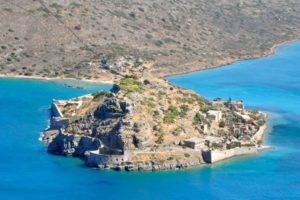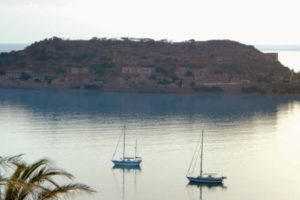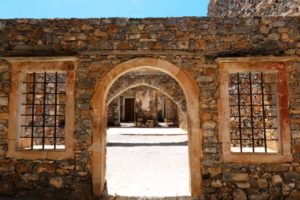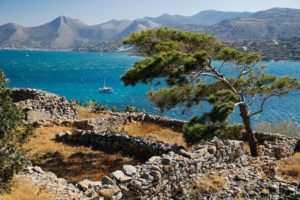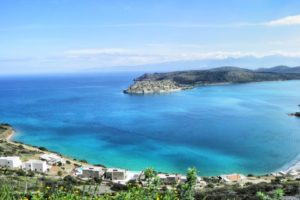The island of Spinalonga (official name Kalidon) is located in the eastern part of Crete, near the town of Elounda. Harking back to the Venetian occupation, the name Spinalonga is Italian, meaning “long thorn”.
History
In 1579, the Venetians built a fortress on Spinalonga over the ruins of an acropolis. They kept control of the island until the Ottoman Empire took possession of it in 1715.
The island is notable for being one of the last active leper colonies in Europe, being used in this manner from 1903 until 1957. The last inhabitant, a priest, left in 1962. This was to maintain the religious tradition of the Greek Orthodox church, in which a buried person has to be commemorated 40 days, 6 months, 1, 3 and 5 years after their death.
There are two entrances to Spinalonga, one being the lepers’ entrance, a tunnel known as Dante’s Gate. This was so named because the patients did not know what was going to happen to them once they arrived. However, once on the island they received food, water, medical attention and social security payments. Previously, such amenities had been unavailable to Crete’s leprosy patients, as they mostly lived in the area’s caves, away from civilization, eating scraps left over by the wolves who shared their caves.
Spinalonga Today
Today, the unoccupied island is one of the main tourist attractions in Crete. In addition to the abandoned leper colony and the fortress, Spinalonga is known for its small pebble beaches. The island can easily be accessed from Elounda and Agios Nikolaos. Tourist boats depart from both towns on a daily basis. There is no accommodation on Spinalonga, meaning all tours last only a few hours. Boat trips from Elounda take approximately fifteen minutes while trips departing Agios Nikolaos can take upwards of one hour.
The book “The Island” by Victoria Hislop is set on Spinalonga and shares the fictional story of a family’s ties to the leper colony.

